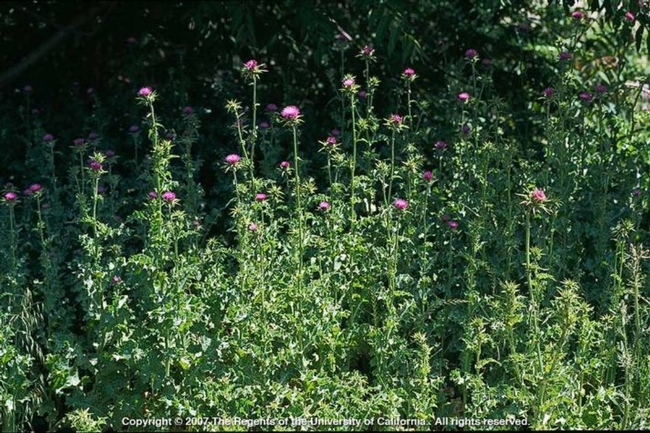This is part of a talk I gave last week in Marin County. These three annual thistles turn up everywhere in northern California, so it's nice to know them by name. They're mostly on disturbed sites, roadsides, and waste ground, but they can also establish on rangeland, pasture, and natural areas.They germinate and grow into rosettes during winter, then in spring they bolt and produce purple flowers.
| Like a lot of our weeds, these species originated in southern Europe, southwestern Asia, and the Middle East. They 'learned' how to survive alongside human agriculture early on. |  |
Italian thistle (Carduus pycnocephalus) is probably the most common. It is a slender plant with sparse foliage, up to 6 ft tall on fertile soils. Its stems have spiny wings and its flowers are small and cylindrical. The leaves are deeply lobed and have a little bit of milky striping. Italian thistle also has several close relatives in California.
 |
Milk thistle (Silybum marianum) can look a lot like Italian thistle, especially as a seedling. But its leaves are not as deeply lobed, the milky stripes are much more pronounced, and the plant grows much bigger and more robust. The flowers are larger and more globe-shaped. The stems don't have wings like Italian thistle.
 |
 |
Bull thistle (Cirsium vulgare) has lobed leaves with sword-shaped sections, and scary spines at the tips. This thistle doesn't have the milky striping, and its leaves are hairier than Italian or milk thistle. It has spiny-winged stems, and its flowers are classic onion-shaped thistle flowers. This plant often grows as a biennial.


